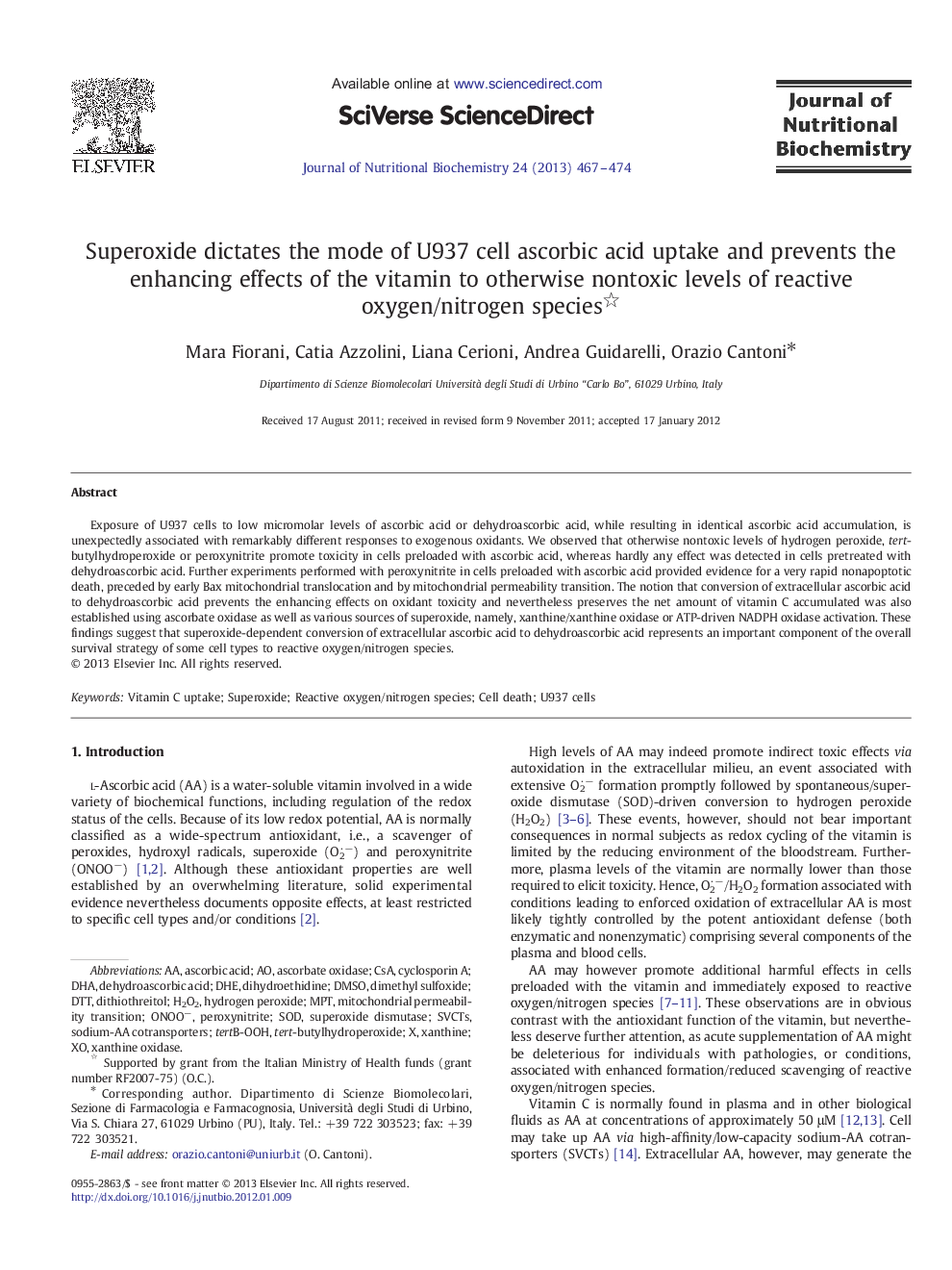| Article ID | Journal | Published Year | Pages | File Type |
|---|---|---|---|---|
| 1990129 | The Journal of Nutritional Biochemistry | 2013 | 8 Pages |
Abstract
Exposure of U937 cells to low micromolar levels of ascorbic acid or dehydroascorbic acid, while resulting in identical ascorbic acid accumulation, is unexpectedly associated with remarkably different responses to exogenous oxidants. We observed that otherwise nontoxic levels of hydrogen peroxide, tert-butylhydroperoxide or peroxynitrite promote toxicity in cells preloaded with ascorbic acid, whereas hardly any effect was detected in cells pretreated with dehydroascorbic acid. Further experiments performed with peroxynitrite in cells preloaded with ascorbic acid provided evidence for a very rapid nonapoptotic death, preceded by early Bax mitochondrial translocation and by mitochondrial permeability transition. The notion that conversion of extracellular ascorbic acid to dehydroascorbic acid prevents the enhancing effects on oxidant toxicity and nevertheless preserves the net amount of vitamin C accumulated was also established using ascorbate oxidase as well as various sources of superoxide, namely, xanthine/xanthine oxidase or ATP-driven NADPH oxidase activation. These findings suggest that superoxide-dependent conversion of extracellular ascorbic acid to dehydroascorbic acid represents an important component of the overall survival strategy of some cell types to reactive oxygen/nitrogen species.
Keywords
tert-butylhydroperoxideMPTDTTXanthine oxidaseDMSOONOO−Hydrogen peroxideascorbate oxidaseAscorbic acidDehydroascorbic acidmitochondrial permeability transitionCSADHADihydroethidinedithiothreitolDimethyl sulfoxideXanthineSODU937 cellsSuperoxideSuperoxide dismutasecyclosporin ACell deathH2O2DHEPeroxynitriteReactive oxygen/nitrogen species
Related Topics
Life Sciences
Biochemistry, Genetics and Molecular Biology
Biochemistry
Authors
Mara Fiorani, Catia Azzolini, Liana Cerioni, Andrea Guidarelli, Orazio Cantoni,
